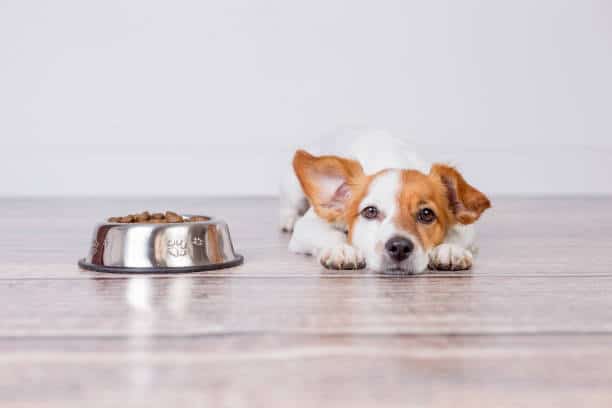
Last Updated on 2 years by Jenny Sovann
You would never think to bring a baby into your home without thinking about pet-proof home. Your new pet will need the same planning. In fact, it’s actually easier to child-proof a home than pet-proofing it, because you have some time before babies become mobile enough to get into much trouble. The same is not true for pets. They are active and naturally inquisitive from day one, and they are prepared to chew on and swallow anything that they can. If unsupervised, they can chew electrical cords, damage things in the home, eat trash, and get into whatever is within reach (including medications, poisonous plants, needles and thread, household cleaners, your favourite belongings, etc.).
How Do I Pet-Proof My Home

If you think you might be tempted to impulsively adopt a pet as soon as you see that special critter, it is important to make pet-proof home before you ever start the search-and-visit process. While your long-term plan may involve giving your beloved animal free range in your home even when no human is present, you cannot start this policy as soon as your pet enters your home. It would not be safe for your new family member or your belongings and may quickly lead to disillusionment. Instead, plan ahead, knowing that it will take time, bonding, and training before any pet can be given open access to your living space.
How to Keep Pet Isolated and Safe

So, when it comes to indoor safety, you’ll want to consider what it would take to keep the pet isolated and safe for any period when a human is not available for direct supervision. There might be rooms that can be completely pet-proofed and closed off (e.g., bathroom, laundry room) where your pet could be safe. Crates are also popular options as long as the confinement is for reasonable periods of time. Don’t turn a crate into a prison, or pets will resist going in and undesirable behaviors will become evident and ingrained. Once again, problem-free is all about having realistic expectations, and caging a social animal for extended periods or tying it to a post in the yard are not actions that will foster the desired human-animal bond.
Walkthrough your living space and try to appreciate where problems could exist. Make sure all medications, cleaners, poisons (insecticides, rodenticides, antifreeze, etc.) and other dangerous items are completely inaccessible. For most cabinets, use childproof latches. Keep trash containers sealed, or within a secure cabinet.
Remember that pets have a much better sense of smell than we do, and will quickly find anything they consider interesting, but their noses don’t tell them which things could be dangerous. So, foods like chocolate, macadamia nuts, sugar substitutes (xylitol), raisins and grapes and several other items can be toxic, but that won’t stop pets from gorging on them if found. Remember too that many pets are nimble and they will think nothing of climbing on one surface to reach another—for instance from a counter, to the air fryer to the top of a refrigerator—so it may not be sufficient to simply place items “out of reach” as you would for a baby.
It’s also important to block access to any nooks and crannies, and behind furniture where pets could get themselves trapped, where they could encounter electric cords, or otherwise find themselves in trouble with no responsible human nearby. Also, take inventory of houseplants and learn which ones might be toxic. Dangers may not always be obvious. For example, members of the true lily and day lily families can be quite toxic for pets, especially cats.
There’s no need to panic, but a quick internet search can help you determine if the plants you currently have in your home would be toxic to an incoming pet (see recommended reading). Also, keep the toilet lid closed so pets don’t drown, don’t get exposed to toilet cleaners and sanitizers, and so they don’t drink toilet water and then potentially spread toilet germs to household members (such as with kisses when reunited with their loved ones).
Similarly, think about the outdoor situation before you bring home a pet. If the yard isn’t fenced, how will you prevent your pet from getting out, or other animals from coming in? Will you have your pet on a leash while out, or do you need a fence so your companion can spend time exploring on its own?
Do you have a shaded area in your yard so the pet can avoid direct and prolonged sun exposure? If not, can you create some shade, or will you need to limit yard time on hot or sunny days? Think about providing your new loved one with access to freshwater, but not deep water in which it could drown. It’s fine if pets spend a short amount of time alone in the yard, but spending extended periods of time outdoors unsupervised can give pets the opportunity to get into trouble, especially young or new pets.

How long can pets be left alone in a home, even if confined? To a certain extent, it depends on the species and age. Puppies are very social, and if expected to remain in confinement for more than a couple of hours, they will likely consider this punishment, which can harm social bonding. With gradual extension and a reward-based system, dogs can eventually be confined for up to eight hours in a crate, and this is much easier to attain if someone can come in mid-day to check on them, play with them, and give them the opportunity to take care of their toileting needs. As dogs become elderly, it should be expected that they will need more bathroom breaks than they did as young adults. Once again, if you want to keep your pet problem-free, support their abilities to maintain appropriate toilet habits.
The situation is often somewhat simpler for cats. Kittens should not be left alone in a pet-proofed home for more than four hours at a time, but adult cats can be left at home alone for 8 hours as long as they have access to a clean litter tray, freshwater, and have been fed a meal prior to being left alone.



